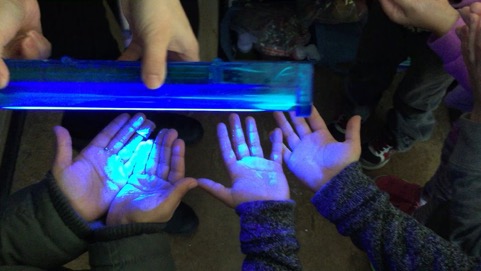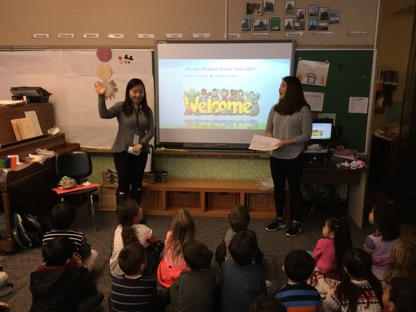Kindergarten teaching as a part of clinical practice with community and population
By SEOHEE SOPHIA LEE

Fluorescent Germ Experiment
On February 9th 2017, one of the student nurses in my clinical rotation group and I got to meet 22 little health promoters at David Livingstone Kindergarten. We provided them with a fun learning experience regarding to how best to stop spreading germs, “hand washing”.
In the beginning of the clinical practice, the school of nursing had offered us a variety of teaching opportunities with various health topics such as sexually transmitted infections, nutrition and healthy food choices, baby massage, and hand washing. As I have learnt that health teaching is one of major public health interventions, I considered this teaching practice as a highlight of this clinical rotation.
Generally, health teaching in community and public setting aims to build the community and public capacity to put health in their agendas and perform health promotion and protection strategies; to provide up-to-date accurate health information; and to empower individuals and families’ self efficacy so that they can elicit the best personal health practices and coping skills in their lives. Making sure to keep these points in my mind, my partner student nurse and I chose to teach kindergarteners hand washing to help them build the healthy habit. While developing a teaching and learning plan, we referred to the program called ‘Do Bugs Need Drugs?’, an educational program of Alberta Health Services and the British Columbia Centre for Disease Control (2014) and adapted a glo-germ activity.

Teaching Characteristics of Germs and Proper Handwashing Skill Before the Actual Hand Washing Activity
To meet the students’ learning objectives, we utilized multiple teaching strategies; power point slides to deliver knowledge with visual effects; role playing to show how germs can easily spread and make others sick; singing a handwashing song to help them acquire a proper hand washing skill; putting yellow sticky notes on which students believe germs are to help them understand that germs are everywhere; coloring sheets to reinforce their memory; and actual handwashing activity using glo-germ powder and black light to show the spread of germs and the difference before and after hand washing using a soap. Consequently, students seemed to be content with the learning experience and aware of the day’s lessons as evidenced by their best performance to get the glo-germs off through proper hand washing! I hope that they remember the importance of frequent and thorough hand washing and keep playing a role as little health promoters in their families, schools, and community.
References: Retrieved from http://www.dobugsneeddrugs.org/
 Follow
Follow